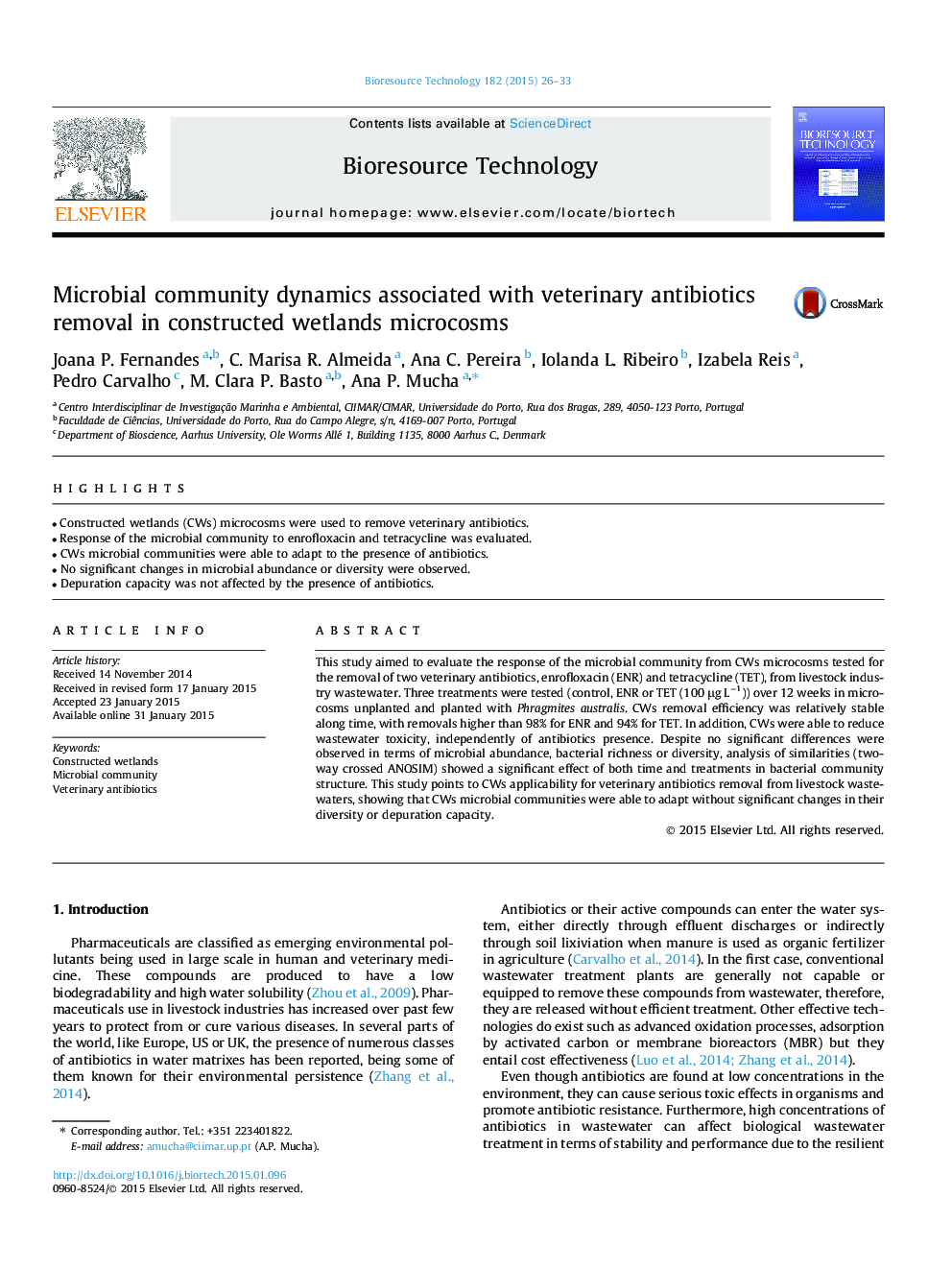| Article ID | Journal | Published Year | Pages | File Type |
|---|---|---|---|---|
| 679958 | Bioresource Technology | 2015 | 8 Pages |
•Constructed wetlands (CWs) microcosms were used to remove veterinary antibiotics.•Response of the microbial community to enrofloxacin and tetracycline was evaluated.•CWs microbial communities were able to adapt to the presence of antibiotics.•No significant changes in microbial abundance or diversity were observed.•Depuration capacity was not affected by the presence of antibiotics.
This study aimed to evaluate the response of the microbial community from CWs microcosms tested for the removal of two veterinary antibiotics, enrofloxacin (ENR) and tetracycline (TET), from livestock industry wastewater. Three treatments were tested (control, ENR or TET (100 μg L−1)) over 12 weeks in microcosms unplanted and planted with Phragmites australis. CWs removal efficiency was relatively stable along time, with removals higher than 98% for ENR and 94% for TET. In addition, CWs were able to reduce wastewater toxicity, independently of antibiotics presence. Despite no significant differences were observed in terms of microbial abundance, bacterial richness or diversity, analysis of similarities (two-way crossed ANOSIM) showed a significant effect of both time and treatments in bacterial community structure. This study points to CWs applicability for veterinary antibiotics removal from livestock wastewaters, showing that CWs microbial communities were able to adapt without significant changes in their diversity or depuration capacity.
